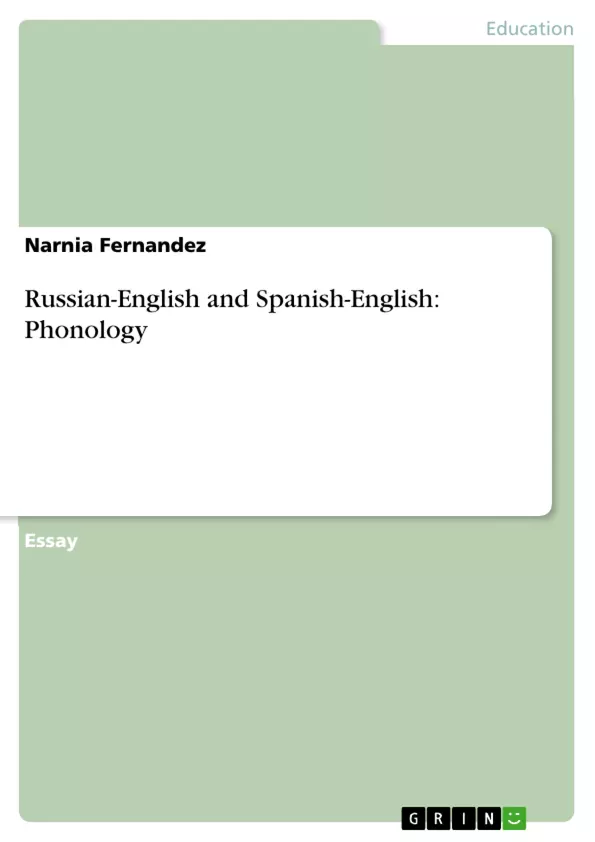Why non-native speakers of English talk the way they do? Several linguists like Gass & Selinker, Major and Lado have investigated on this issue and agreed at least upon one principle - the Contrastive Analysis Hypothesis (CAH). It states that two languages have to be compared in order to determine possible errors since the mother tongue plays one important role when it comes to second language acquisition. That is, L1 interference. The following essay should give an approximate explanation on this issue by examining Russian and Spanish speakers acquiring English. The focus will lie on phonology, especially on obstruents and their distribution. According to CAH, it is necessary to analyze Russian, English, and Spanish at first, before looking at the different errors in pronunciation at the basis of Data Set 1.
Inhaltsverzeichnis (Table of Contents)
- Introduction
- Analysis
- Conclusion
Zielsetzung und Themenschwerpunkte (Objectives and Key Themes)
This essay aims to provide an explanation of how non-native English speakers acquire English pronunciation, focusing on the influence of the speaker's first language (L1). The essay utilizes the Contrastive Analysis Hypothesis (CAH) to examine the acquisition of English phonology by Russian and Spanish speakers, specifically focusing on obstruents and their distribution. The analysis uses data to illustrate how L1 interference affects the acquisition of English pronunciation.
- The influence of L1 on L2 acquisition, specifically focusing on phonology.
- The Contrastive Analysis Hypothesis (CAH) and its application to L2 acquisition.
- An analysis of Russian and Spanish phonology, particularly obstruents and their distribution.
- Examples of pronunciation errors made by Russian and Spanish speakers acquiring English.
- The role of language-specific features in L2 phonological acquisition.
Zusammenfassung der Kapitel (Chapter Summaries)
- Introduction: This chapter introduces the essay's topic, the Contrastive Analysis Hypothesis (CAH), and the focus on L1 interference in L2 phonological acquisition. It outlines the specific languages and linguistic phenomena to be investigated.
- Analysis: This chapter delves into the analysis of Russian and Spanish phonology, comparing them with English phonology. It focuses on obstruents, their distribution, and the potential errors that Russian and Spanish speakers might encounter when acquiring English.
Schlüsselwörter (Keywords)
This essay explores the field of second language acquisition with a focus on phonology, specifically L1 interference and the Contrastive Analysis Hypothesis (CAH). It examines the acquisition of English by Russian and Spanish speakers, analyzing the distribution of obstruents and the resulting pronunciation errors. Key themes include language-specific features, L1 transfer, and the impact of phonological contrasts on L2 acquisition.
- Citation du texte
- Narnia Fernandez (Auteur), 2012, Russian-English and Spanish-English: Phonology, Munich, GRIN Verlag, https://www.grin.com/document/213040



